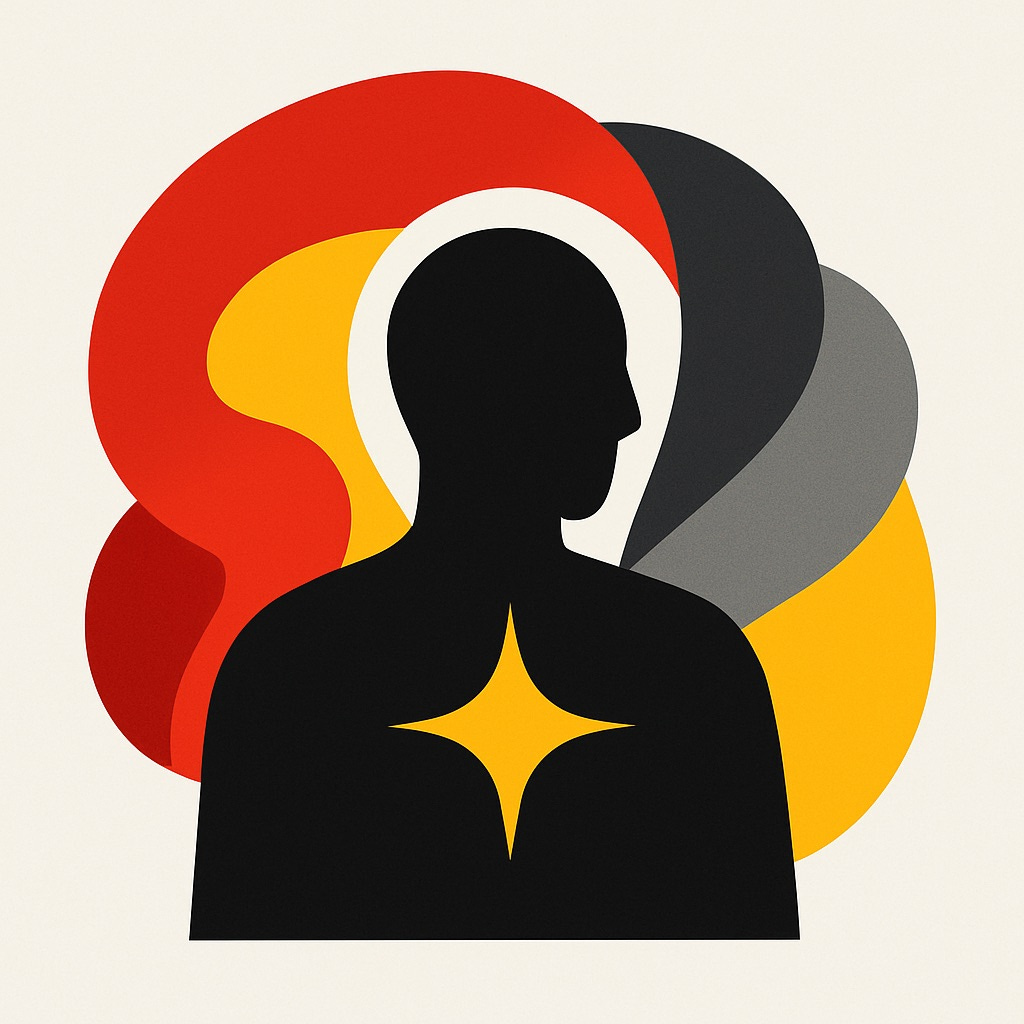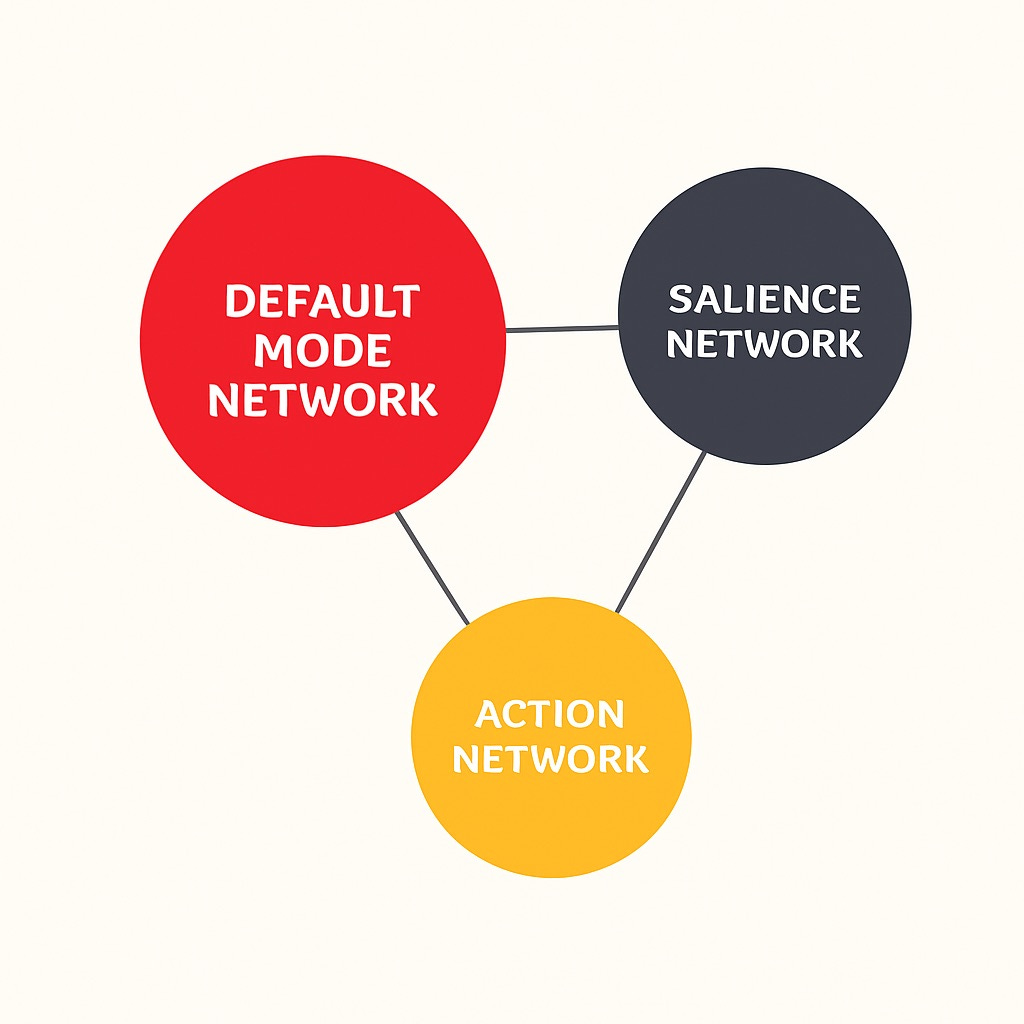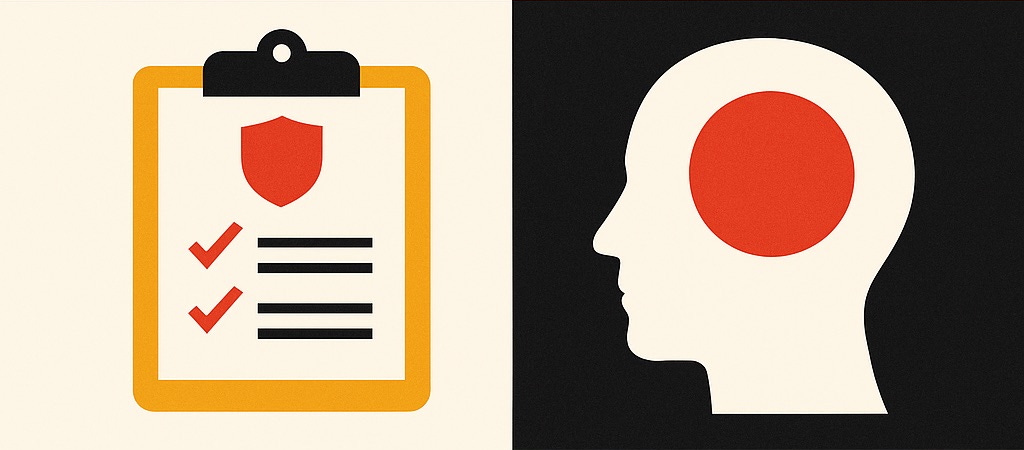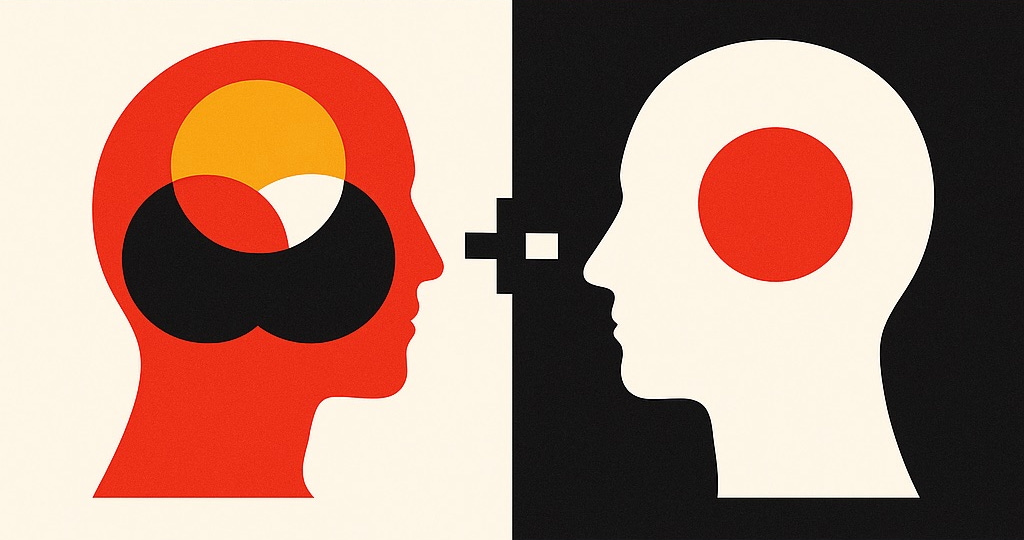One Mission, Zero Noise
Radically compress your identity into one North Star—and watch clarity, focus, and brand gravity stack in your favor.
You probably wear more than one hat. One week you’re a product designer, writer, community host and therapist for your audience. Each descriptor feels like a merit badge—proof of hustle. Yet, the more roles you collect, the more scattered you feel.
Psychologists call this phenomenon self‑complexity. The theory suggests we organize our identity around multiple roles and relationships; some of us juggle many distinct self‑aspects—friend, parent, writer, musician—while others have just a few. High complexity cushions emotional blows but spreads your attention thin. Digital life multiplies fragmentation, turning your persona into a mosaic.
What if you compressed your identity around one mission? Instead of juggling dozens of personas, you define a clear function that organizes your talents, values and brand. The aim isn’t to deny your many parts but to give them a shared north star. Below you’ll explore why we have multiple selves, the hidden costs of juggling them, how singular focus creates compounding leverage and how to craft a mission statement that anchors your personal brand.
A Quick Preview
Thesis: When everything you do aligns around one purpose, you reclaim focus and build a magnetic brand. This guide shows you how.
The Science of the Fragmented Self
Long before TikTok, philosophers noticed we aren’t a single, unchanging self. Modern network neuroscience offers a biological explanation: distinct brain networks support different modes of being. The Default Mode Network activates when you daydream or reflect on yourself; the Action Network engages when you’re solving problems; and the Salience Network toggles between them. Healthy people fluidly switch among these states—you may speak differently at work than with family—yet you still feel continuous and authentic.
Problems arise when parts become rigid or disconnected. Survivors of complex trauma often cope through dissociation, splitting their personality so that the part experiencing abuse can be kept separate from the one living everyday life. Dissociation can feel like detachment or multiple selves; chronic stress can dysregulate brain networks and make switching between roles volatile.
Not all multiplicity is pathological. Plural communities suggest that multiplicity is natural and not necessarily harmful. For creators, this perspective is liberating: there’s nothing wrong with having different personas. The challenge is coordination—listening to each part without letting any single part hijack your life.
Identity Isn’t the Enemy
You contain multitudes. The goal isn’t to exile your parts—it’s to unite them around a purpose.
The Hidden Cost of Too Many Selves
While high self‑complexity can buffer your feelings, it carries a cognitive price. Wearing twelve hats fragments your attention and forces you to negotiate conflicting expectations. Art therapist David Gussak found that juggling institutional rules and inmate needs forced him to constantly change roles. Many professionals recognise the stress of constantly switching between roles and values.
Beyond the psychological strain, there’s a measurable productivity penalty. Research on attention residue shows that switching tasks can reduce productivity by up to 40 percent and that it takes around 15–23 minutes to regain full focus.
Writer Dan Koe likens the mind to a supercomputer—multiple open loops chew up memory—so he argues for one project and one vision at a time. Life coach Paul Strobl calls this paralysis by analysis: more choices lead to less achievement and multitasking dilutes effectiveness.
Why This Hurts
Attention residue: every context switch leaves cognitive shrapnel.
Decision fatigue: choosing among too many priorities drains willpower.
Diluted brand: if your mission is scattered, your audience doesn’t know what you stand for.
Why Singular Focus Creates Compounding Leverage
If fragmentation drains your energy, singular focus multiplies it. High performers across domains demonstrate the power of committing to one mission. Japanese sushi master Jiro Ono earned three Michelin stars by dedicating his life to perfecting sushi. His tiny restaurant is a global pilgrimage for food lovers, showing that depth beats breadth.
Likewise, Apple’s turnaround under Steve Jobs was driven by radical simplification. When Jobs returned in 1997 he slashed the product line to just a handful and poured resources into the iPod and iPhone, channeling creativity into groundbreaking products.
Neuroscience backs up these anecdotes. By grouping similar tasks and protecting long stretches of uninterrupted work, you avoid attention residue and tap into your brain’s full capacity. Author Cal Newport calls this deep work, the ability to focus without distraction on cognitively demanding tasks. The more you practice focusing on a singular mission, the more efficient you become, which compounds over time. Singular focus also clarifies your brand: when your mission is scattered across unrelated ventures, your audience doesn’t know what you stand for.
Depth Beats Breadth
“Do fewer things better.” — The principle behind Jiro Ono’s mastery.
Designing Your Personal Mission: Compressing Identity with Purpose
A personal mission statement distills your aims, values and what you represent. Hult International Business School notes that such a statement clarifies goals, dismisses distractions and provides a clear pathway to success. It should reflect what matters to you, what motivates you and how you want to impact the world.
Mission statements aren’t reserved for corporations. Mission statements at the individual level promote daily leadership, serve as a compass for decision‑making and save mental energy. During chaotic times, your mission keeps you anchored and encourages authenticity; reflecting on your purpose may prompt deep inner work and a more genuine public presence.
How do you write a mission that compresses your identity without erasing it? Start by examining your core values and noticing which activities consistently energize you. Then look for overlap between your skills and passions; the intersection of joy and impact often points toward a mission. Summarize how your strengths help others in one or two sentences. Richard Branson’s mission—“to have fun in [my] journey through life and learn from [my] mistakes”—shows the power of brevity. Your statement will evolve with you and sharing it can attract collaborators.
Quick Mission Worksheet
List your values. What principles do you refuse to compromise?
Identify energising activities. When do you feel most alive?
Spot the overlap. Where do skill, joy and impact intersect?
Write a sentence. How can your strengths help others right now?
Executing on Your Singular Function
Once you have a mission, the real work is living it. Protect deep work by time‑blocking. Schedule dedicated blocks for your core project and group similar tasks together; this reduces task switching and attention residue. Incorporate brief mindfulness or journaling between sessions to clear mental clutter—just ten minutes of meditation can significantly reset your focus.
When new opportunities arise, evaluate them against your mission. If they don’t serve your central function, decline or delegate. Use consistent language and tone across platforms so your public identity feels coherent. And revisit your mission periodically to ensure it still reflects who you are and where you’re heading.
Action Steps
Block your deep work. One to two hours each day on your core mission.
Mindfully reset. Use short meditations or journaling to clear your head.
Filter opportunities. Say no to anything that doesn’t align with your mission.
Stay consistent. Align your tone and messaging across platforms.
Balancing Integration and Compression
After reading about radical identity compression, you might worry about becoming one‑dimensional. Humans naturally contain multiple parts, and a healthy self is flexible. Neuroscientists emphasize that bringing different parts to different contexts is adaptive. Plural communities even celebrate multiplicity.
Compressing your identity doesn’t mean suppressing emotions or ignoring unresolved trauma. Survivors who split off painful experiences need reintegration, not further compartmentalization. Therapy, journaling and self‑compassion help you hear from all your parts and weave them into your mission. If there are wounded parts carrying unresolved pain, compression may silence them temporarily, but they will resurface. Healing requires acknowledging those parts and giving them a role in your story.
Similarly, don’t compress your life so much that you starve essential needs. We all need play, rest and relationships. A mission should energize rather than suffocate. You’re aiming for a core function that organizes your work life, not a monastic vow that denies humanity. Finally, revisit and evolve your mission statement as you grow. Your purpose may shift, and that’s healthy.
Compassionate Compression
Integration + focus beats either/or. Honor your parts while rallying them around a unifying purpose.
Embrace a Clear Mission without Losing Yourself
Radical identity compression offers entrepreneurs and creators three major benefits: clarity, deep focus and compounding leverage. When everything you do aligns around one mission, you reduce cognitive load and decision fatigue, eliminate attention residue and amplify your brand. This approach doesn’t deny your complexity. Integration and self‑compassion allow you to honor all your parts while presenting a coherent mission to the world. Draft your one‑sentence mission today and let it guide your next decision. You might be surprised how much freedom and creativity emerge from such constraint.
--
Hope this helped you zero-in on your own North Star. If it did, hit “Subscribe” to stay in the loop—and keep leveling up together.
— Brian






